The gradient is arguably one of the most trending motifs in contemporary abstraction—especially in the 21st century. A range of colors fill an entire plane, creating a smooth transition from one hue to another. Why is the gradient such a trending visual motif and which artists pioneered the gradient into art, and are leading the trend today? In this article, we are pleased to present and discuss eleven established artists, followed by a visual anthology of twenty emerging and mid-career artists, revisiting the gradient in contemporary art.
The gradient is everywhere in today’s visual culture. It has been one of the most trending visual elements in graphic design, from web design to print, it has been an ongoing trend in interior design, and if you are interested in abstract art, it is most likley dominating your feed of suggested content on Instagram, with numerous artists and artworks going viral when focusing on the gradient. It is safe to say that the gradient evokes a very satisfactory aesthetic experience, as it is so popular and people seem to long for it. This almost irresistable nature of the gradient is based on a so-called autnomomous sensory meridian response—a physical and psychological experience that combines pleasureable and relaxing sensations as a response to seeing the gradient, also known as ASMR.
Despite this relaxing and pleasurable response of the human brain towards the color gradient, the historical examples of the gradient are rather limited throughout art history. We encounter the gradient in the skies of landscape painters using aerial perspective as pioneered by Joachim Patenir (ca. 1480-1524) or the nuanced shadings in Katsushika Hokusai’s (1760-1849) depictions of Mount Fuji. With the arrival of abstract art, the potential of the color gradient was discovered and explored slowly, but surely. It appeared occassionaly in some Suprematist compositions by Kasimir Malevich (1879-1935)—who ironically used the gradient more frequently in his early and figurative works—and would become a point of interest for only a small number of artists in Color Field Painting.
But even in those art movements and beyond that seemed to get to bottom of abstraction—think of Post-Painterly Abstraction, Op Art, Hard-Edge Painting, and Minimal Art—the gradient was a very occassional motif, as the visual aesthetic of post-war abstraction focused predominantly on monochromatic planes, hard edges, and flatness, accentuating the two-dimensionality of painting, rejecting the traditional vision of painting as an open window, the impasto brushstroke, or the painterly in general—valorized by art critic Clement Greenberg.
The gradient suggests depth, a curvature or distance, and was arguably less suited in this pursuit to accentuate the two-dimensional, and therefore remained in the periphery of abstraction in silence. However, as the upcoming established artists illustrate, a small number of artists were fascinated by the gradient and its relation to space, light, and color, as it suggests depth while remaining flat. The invention of spray paint in 1949 would be an important katalyst, although it only gained real traction in the 60s and 70s, to experiment and depict the color transitions. However, by the end of the 20th century and with the arrival of digital art and software such as Photoshop, the gradient would boom strongly.
As mentioned earlier, axial and radial gradients became part of our visual culture, and the satisfactory visual experience became clear, as numerous artists turned to the gradient, dominating abstraction as one of the key trends of 21st century art. But art history is in the first place a history of individual artists and artworks, before the macro structures and connections are identified and canonized. Therefore, it is time to discuss eleven established artists who pioneered the gradient throughout history up to this very day.
1. Shen Chen
Shen Chen, born in 1955 in Shanghai, China, currently residing and working between New York and Shanghai, is a prominent contemporary artist known for his pioneering work in abstract and experimental ink painting. Shen’s early influences include the brushwork of renowned Buddhist monks Liang Kai and Bada Shanren, whose approach to traditional Chinese ink painting, marked by the dynamic interplay between ink and white space, inspired his exploration of abstraction. In the 1980s, Shen began experimenting with abstract ink painting by deconstructing Chinese calligraphy into individual brushstrokes. His artistic practice places a strong emphasis on the process and materials, incorporating his training in traditional ink techniques with modern approaches.
In recent years, he has primarily worked with acrylic paint, applying it in a manner that echoes the characteristics of ink. By painting with the canvas placed on the floor, Shen employs a physical, introspective method, layering vertical brushstrokes that create horizontal markings, symbolizing the continuity and transition of movement. Shen’s work, characterized by subtle tonal gradations and nuanced shifts, reflects the influence of the Color Field movement of the 1940s and 1950s while remaining deeply rooted in the philosophical principles of traditional Chinese painting. His disciplined, repetitive layering technique adds depth and dimension to his canvases, embodying a dialogue between opacity and translucence. Each piece is considered complete only when Shen feels his qi (energy and breath) has been fully expressed, reaching a state of emptiness and void.1
Notable exhibitions include the Shanghai Art Museum and Ningbo Museum of Art. His first solo exhibition took place in 1984 at the China Journalist Society in Beijing. Over the years, he has collaborated with galleries across Asia, Europe, and America and has showcased his art both domestically and internationally. Notable venues include the National Art Museum of China (NAMOC), Roma Academy of Fine Arts, Today Art Museum, Nantong Museum of Art, San Shang Museum of Contemporary Art, Shanghai University Museum, Queens Museum of Art, Zhendai Museum of Modern Art, Hexiangning Museum of Contemporary Art, Xi Hu Art Museum, Doulun Museum of Modern Art, Museum of Chinese in America, Ming Yuan Museum of Art, Epoch Art Museum, Yuan Art Museum, Himalaya Museum of Art, Singer Museum of Art, Bochum Museum, Kunsthalle Recklinghausen, Museum Hurrle Durbach, and the ME Collection in Berlin.2

2. Judy Chicago
Judy Chicago, born in 1939 in Chicago, currently residing and working in Belen is an American artist, author, feminist, educator, and intellectual. Chicago’s work and ideas have had a profound impact both within the art world and beyond. Chicago has consistently championed the idea of art as a powerful tool for intellectual transformation and social change, advocating for women’s right to participate in art at the highest levels. This dedication has positioned her as a symbol of inspiration, known as an artist, writer, teacher, feminist, and humanist. Her life and work embody an expanded definition of art, emphasizing the importance of freedom of expression and the artist’s role in society.
Throughout her multidisciplinary practice, with a career spanning over six decades, from her colored pyrotechnics, to her early minimal sculptures and paintings in the 60s and 70s, up to her feminist and figurative works from the 70s and onwards, the gradient seems to be the visual trademark tying everything together. Chicago mastered the use of acrylic spraypaint, making the gradient an essential cornerstone within her visual language.
Her work is represented in prestigious collections worldwide, including the British Museum, Moderna Museet (Stockholm), Metropolitan Museum of Art (New York), National Gallery (Washington DC), Los Angeles County Museum of Art, Museum of Contemporary Art Los Angeles, Hammer Museum, Getty Trust and Getty Research Institute, San Francisco Museum of Modern Art, Tate Modern, Crystal Bridges Museum of American Art, and the Art Institute of Chicago. Additionally, her work is part of numerous university art collections, including those at Brandeis, Cornell, Harvard, University of Illinois, University of Michigan, UCLA, Canterbury (New Zealand), and Cambridge (UK).3

3. Wang Guangle
Wang Guangle, born in 1976 in Fujian, China, residing and working in Beijing, is a distinguished artist and a pioneer of conceptual painting in China. As a founding member of the N12 artist group, Wang contributed to reshaping contemporary Chinese art, moving away from traditional representational painting towards a focus on individual expression. He is widely acclaimed for his process-based paintings, which transform abstract concepts, such as the passage of time, into visual form. His works highlight the materiality of paint and the act of painting through abstraction and repetition.
Wang’s approach to art is influenced by the historical tradition of ancient Chinese scholars, treating painting as a daily practice for moral and spiritual reflection. His distinctive method involves the use of uniform brushstrokes and a systematic layering process, starting from the edges of the canvas and moving inward. This technique creates a subtle color gradient, resulting in the appearance of an illuminated rectangle or void that conveys depth and dimension. The varying tones within each composition act as subtle framing devices, enhancing the illusionistic quality of his paintings.
Wang Guangle’s work has been featured in several notable solo exhibitions, including those at Beijing Commune (2009, 2011, 2015) and Soka Art Center in Taipei (2011). His art has also appeared in more than ninety group exhibitions globally, such as China’s ReVision: Focus Beijing at the Ludwig Museum, Germany (2008); Prague Biennale (2009); Busan Biennale (2010); California-Pacific Triennial at the Orange County Museum of Art, USA (2013); and 28 Chineseat the Asian Art Museum, San Francisco (2015). Wang’s practice continues to captivate audiences with its introspective, meditative approach and exploration of time and materiality.4

4. Loie Hollowell
Loie Hollowell, born in 1983 in Woodland, California, residing and working in New York, is a contemporary artist known for her distinctive paintings and drawings that explore the intersection between abstraction and figuration, focusing on themes of the bodily landscape—marked by the visual motif of the gradient. Hollowell’s work often draws from her own life experiences, addressing themes of sexuality, pregnancy, and birth. Her geometric compositions incorporate symbolic forms such as the mandola, ogee, and lingam, as well as the use of symmetry, typically centered around a singular axis, connecting her paintings to her own body and the natural world.
The scale of her work is deliberate, correlating directly to the size of the body part being depicted, whether it is the head, breasts, groin, or the full body. Her practice further explores physicality through the addition of sculptural forms to her canvases, blending them seamlessly to challenge the viewer’s perception of the flatness of the gradient and the three-dimensionality and depth it suggests. Hollowell’s use of bold colors, varied textures, and geometric symmetry places her practice in the lineage of influential American artists such as Agnes Pelton, Georgia O’Keeffe, and Judy Chicago. Her work is also inspired by the California Light and Space Movement and Neo-Tantric painters like Ghulam Rasool Santosh and Biren De.5
Notable exhibitions encompass renowned institutions such as The Aldrich Museum, Ridgefield, CT; The Long Museum West Bund in Shanghai, China; the X Museum in Beijing, China; Museum De Fundatie in Zwolle, the Netherlands; the Hirshhorn Museum and Sculpture Garden in Washington, D.C., the United States of America; the Los Angeles County Museum of Art in Los Angeles, United States of America; or the Roberts Institute of Art in London, the United Kingdom.6

5. Jules Olitski
Jules Olitski, born in 1922 in Snovsk, Ukraine, emigrated to the United States in 1926, settling in Brooklyn. The artist passed away in 2007 in New York City. A pivotal figure in Color Field Painting, Olitski is a true master and pioneer when it comes to the gradient and the use of spray paint, with many of his archetypical works functioning as a direct source of inspiration for contemporary artists today. Initially, he experimented with thick impasto and was inspired by Jean Dubuffet and Jean Fautrier. Olitski’s early work involved pouring paint directly onto the canvas and applying it with rollers, brushes, or sponges.
A suggestion from Kenneth Noland led Olitski to transition to using a spray gun, which allowed him to create thin layers of liquid paint over the canvas. This resulted in nuanced color fields with varying density and tonal depth as the gradient entered his practice and paved the way for numerous artists to explore the gradient in the footsteps of Olitski. The spray-painting technique introduced elements of accidental drips and splatters, lending a dynamic and less commercialized surface to his work.
After obtaining an MA in Art Education from New York University, Olitski taught at C.W. Post, Long Island (1956–1963), and at Bennington College, Vermont (1963–1967). His first major solo exhibition in the U.S. was held at the Alexander Iolas Gallery in New York in 1958, earning him critical acclaim from figures like art critic Clement Greenberg. He represented the United States at the Venice Biennale in 1966 and was the third artist in history to have a solo exhibition at the Metropolitan Museum of Art in New York in 1969. Although his prominence waned in the 1980s, Olitski’s contributions continue to influence contemporary abstract artists.7

6. Mika Tajima
Mika Tajima, born in 1975 in Los Angeles, residing and working in New York, is a multidisciplinary artist working in performance, sculpture, painting, and new media installation. She aims to investigate the dynamics of human agency and self-determinacy within built and virtual spaces. Mika Tajima’s work explores themes of control, performance, and freedom. She explores the shifting and fluid boundaries between productivity and leisure, focusing on how human behavior and emotional experiences have been reshaped over the course of capitalist development. Tajima’s research-driven practice delves into the technologies and ideologies that influence and condition daily life, shaping human actions and interactions.
Some great examples are the two series of gradient paintings. Negative Entropy features large-scale textile paintings, and it collaborates with neurosurgeons specializing in brain repair through energetic stimulation and activation. She transformed auditory maps of brain activity into visual sound wave representations (spectrograms), assigning specific colors to these patterns.8 In the Art d’Ameublement series, airborne paint particles settle on the inner surfaces of transparent acrylic shells. This process results in vibrant color gradients on the painting’s surface while simultaneously obscuring the view into its depths. Each large-scale piece, evoking themes of isolation and the mysterious, is subtitled with the name of an uninhabited geographic location, enhancing its psycho-geographic resonance.9
She earned her BA in Fine Arts and East Asian Studies from Bryn Mawr College in Pennsylvania and holds an MFA from Columbia University’s School of the Arts in New York. Her work has been featured in various notable exhibitions at prestigious venues such as Borusan Contemporary in Istanbul, Turkey; the Hammer Museum in Los Angeles, the United States of America; the Whitney Museum of American Art in New York, the United States of America; Castello di Rivoli and GAM in Torino, Italy; Palais de Tokyo in Paris, France; among others. Tajima’s work is part of public collections such as the Los Angeles County Museum of Art, the Hammer Museum in Los Angeles, the San Francisco Museum of Modern Art, the Dallas Museum of Art, the Albright-Knox Art Gallery in Buffalo, and the Hirshhorn Museum and Sculpture Garden in Washington, D.C.10

7. James Turrell
Born in 1943 in Los Angeles, residing and working in Arizona, the United States of America, James Turrell is a renowned artist known for his exploration of light and its interaction with space, color, and human perception—resulting in neon and LED light installations featuring the color gradients in light. These installations create the illusion of walls appearing to float and include light planes that shift slowly behind an aperture, evoking both flatness and depth reminiscent of Mark Rothko’s paintings. Turrell’s work invites viewers to engage in a slower, more mindful observation of space and light.
Turrell’s early focus on the concept of “painting with light” laid the foundation for his career, emphasizing the sensory experience of space. His minimalist pieces give light its own structure, prompting viewers to confront the limits of vision while evoking a sense of transcendence and discovery. Turrell’s fascination with light and its relationship to painting and sculpture aligns with his spiritual quest for understanding humanity’s place in the universe, an exploration influenced by his Quaker upbringing, which he describes as offering a “straightforward, strict presentation of the sublime.” Through his art, Turrell seeks to inspire self-awareness and quiet contemplation.
Institutional solo presentations include exhibitions at CICA Vancouver in Vancouver, Canada; Montenmedio Contemporary Foundation in Cádiz, Spain; Museo Picasso in Málaga, Spain; Museo Jumex in Mexico City, Mexico; Asia Society in Hong Kong, China; Museum Frieder Burda in Baden-Württemberg, Germany; Musée d’Arts de Nantes in Nantes, France; Los Angeles County Museum of Art in Los Angeles, the United States of America; Solomon R. Guggenheim Museum in New York, the United States of America; Garage Center for Contemporary Culture in Moscow, Russia; and many more. As a resulted, James Turrell is featured in the collections of almost every renowned public institution, think of the 21st Century Art Museum, Kanazawa, Japan; AKG Art Museum, Buffalo, NY; ARoS Aarhus Kunstmuseum, Denmark; Arizona State University, Tempe, Arizona; the Art Institute of Chicago, Chicago; et cetera.11

8. Lee Ufan
Lee Ufan, born in 1936 in Kyongnam, South Korea, is currently working and residing between Kamakura, Japan, and Paris, France. Ufan is an esteemed painter, sculptor, writer, and philosopher who emerged as a leading figure in the late 1960s as a key protagonist of the Mono-ha (Object School) movement, which became Japan’s first contemporary art movement to achieve international recognition. Mono-ha artists emphasized the relationships between materials and perception over representation or expression, presenting works with minimally altered raw materials.
When it comes to his painterly practice, we encounter a strong focus on exquisite materials such as crushed stone pigment and a minimalistic approach, limiting the number of brushstrokes as much as possible. The gradient reappears throughout his practice, from paintings consisting of one or two strokes on canvas to gradients as the result of the fading brush strokes, showcasing his background in calligraphy.
Notable shows include those at Dia Beacon, USA; National Art Center, Tokyo; Hirshhorn Museum and Sculpture Park, Washington, D.C.; Pompidou Metz, France; Serpentine Galleries, London; and the Guggenheim Museum, New York. His career achievements include the Praemium Imperiale for painting (2001) and the UNESCO Prize (2000). In 2010, the Lee Ufan Museum, designed by Tadao Ando, opened at Benesse Art Site on Naoshima Island, Japan, further solidifying his influence and legacy in the art world.12

9. Jef Verheyen
Jef Verheyen, born in 1932 in Itegem, Belgium, passed away in 1984 in Apt, France, was an artist celebrated for his exploration of light and color while also deeply influenced by the principles of geometry. His work drew on the mathematical theories of Matila Ghyka, particularly those outlined in Le nombre d’Or and The Geometry of Art. Verheyen aimed to make his paintings transcend their materiality, emerging from the wall like a window, and is arguably one of the first artists alongside Jules Olitski to commit as profoundly to the motif of the gradient in abstract painting.
Verheyen’s extensive sketches and studies reveal the compositional principles underpinning his paintings. He aspired to use geometric structures to reflect universally ordered connections, resulting in varied visual effects. Some of his works featured sharp contrasts in shape and color, while others subtly integrated geometric forms, requiring careful observation for the viewer to discern them. His compositions often included diagonal divisions that directed attention toward the interior space of the painting or employed optical illusions to enhance depth. This combination of form and color generated a dynamic interplay, creating a sense of movement and vibration within the colors.
Recent institutional exhibitions include group shows at Palais des Beaux-Arts in Brussels, Belgium; Stedelijk Museum voor Actuele Kunst (S.M.A.K.) in Ghent, Belgium; Museum Kranenburgh in Bergen, The Netherlands; M HKA in Antwerp, Belgium; Kunstmuseum Ahlen in Ahlen, Germany; Verbeke Foundation in Kemzeke, Belgium; to name just a few. As a result, Verheyen is collected by renowned institutions such as Centre Pompidou in Paris, France; Royal Museums of Fine Arts of Belgium in Brussels, Belgium; Tate Gallery in London, the United Kingdom; Kunsthaus in Zürich, Switzerland, among others.13

10. Pieter Vermeersch
Pieter Vermeersch, born in 1973 in Kortrijk, Belgium, residing and working between Turin, Italy, and Antwerp, Belgium, is a contemporary artist and true master when it comes to his artistic commitment to the gradient. His practice in painting extends beyond the boundaries of the traditional canvas, encompassing large-scale spatial interventions that adapt to exhibition spaces or existing architectural environments. His work often includes immersive installations and gradient wall paintings, alongside ephemeral paintings on canvas and pieces made through the irreversible chiseling and milling of natural stone. Complementing these works are photographic prints and marble slabs that he reactivates with subtle brushstrokes or color planes.
His work often originates from photographic sources, using painting as a tool to create images that oscillate between abstraction and representation. Vermeersch’s color gradients are achieved through a meticulous, almost mathematical process, rendering the painted surface smooth and seamless, with no visible traces of labor. Color intensity and tone are subtly modulated, seamlessly blending to form gradients that lack a distinct focal point. Utilizing an arithmetic mean he has developed, Vermeersch performs a statistical reinterpretation of an existing image, methodically transforming pure color into a delicate, vaporous gradient. By deliberately “sabotaging” the original image, he generates a meta-image that immerses the viewer in a dematerialized realm. For Vermeersch, this process reflects a return to the fundamental essence of painting, focusing on color, material, and light that resonate with energy.
Notable solo exhibitions include presentations at the Palazzo Borromeo, Antonini Milano in Milan, Italy; M Museum in Leuven, Belgium; MSK, Museum of Fine Arts in Ghent, Belgium; and group showings at KMSKA Royal Museum for Fine Arts in Antwerp, Belgium; Fondazione Prada in Venice, Italy; Fondation CAB in Brussels, Belgium; MACs in Grand-Hornu, Belgium; Roger Raveel Museum in Machelen-Zulte, Belgium; among others. As a result, Pieter Vermeersch is featured in renowned public collections encompassing the Belfius Art Collection in Brussels, Belgium; the ING Art Collection in Brussels, Belgium; M HKA in Antwerp, Belgium; S.M.A.K. in Ghent, Belgium; Rose Art Museum, Waltham, Massachusetts, the United States of America; the European Central Bank in Frankfurt am Main, Germany; or Fondation Louis Vuitton in Paris, France.14

11. Ann Veronica Janssens
Ann Veronica Janssens, born in 1956 in Folkestone, United Kingdom, residing and working in Brussels, Belgium, has developed an experimental body of work focused on in situ installations using simple or intangible materials such as light, sound, and artificial fog. As a result, throughout her artistic practice, one encounters gradients of light, gradients of dust, gradients of fog, or elusive painterly and sculptural objects marked by color transition.
By doing so, her works engage viewers with the perception of the “elusive,” creating experiences that blur the line between clarity and instability, challenging visual, physical, temporal, and psychological boundaries. Janssens combines Minimalism and science to explore our shifting, sensorial experience of reality and phenomenology. Her immersive environments reconsider the limits and fragility of perception, using properties of space, light, time, radiant, color, and surface to embrace transparency, fluidity, reflection, and refraction.
Her work has been featured in numerous solo exhibitions, including presentations at South London Gallery in London, the United Kingdom; Louisiana Museum in Humlebæk, Denmark; De Pont Foundation in Tilburg, Netherlands; Kiasma Museum in Helsinki, Finland; Baltimore Museum of Art, the United States of America; the Institute of Contemporary Art in Villeurbanne, France; the Nasher Sculpture Center, Dallas, the United States of America; and S.M.A.K. in Ghent, Belgium. Janssens represented Belgium at the 45th Venice Biennale in 1999 alongside Michel François and has participated in many international biennials, including Manifesta 10 in St. Petersburg, Russia; 18th Sydney Biennale, Australia; Manifesta 8 in Murcia, Spain; and the 22nd São Paulo International Biennial, Brazil.15

Final Thoughts & 20 Emerging and Mid-Career Artists
There are a number of interesting takeaways from this list. First and foremost, the not so surprising dominance of American artists as the development of abstract art occured predominantly on American soil. But also the notable presence and artistic contributions to the gradient from Asian artists due to their historical legacy of ink painting, as the gradient seems to be part of their cultural DNA and heritage. We also encounter two Belgian artists, which might be due to my expertise in Belgian contemporary art, yet their presence is one hundred procent justified as their resume and ArtFacts ranking illustrate. It is also notable that more than half of the artists from this list have been represented or exhibited by Pace Gallery, showing their commitment as a mega-gallery to the irresistable appeal of the gradient at the highest level.
But, of course, the gradient does not stop with these eleven artists, as I opened this article by stating that your Instagram feed might be flooded with gradient paintings, as is mine, if you are interested in abstract art, of course. This results in the following recital in random order, of emerging and mid-career artists, as a visual addendum and anthology of the gradient today; Maximilian Rödel, Michael Craik, Aron Barath, Marcel Krempin, Peter-Maximilian Ronsdorf, Jordan Tran/KEAN, Nick Thomm, Jonathan Todryk, Ruben Benjamin, Justin Morin, Eric Cahan, Alejandro Javaloyas, Charlie De Voet, Theo Pinto, Chiara Capellini, Stefan Peters, Keira Kotler, Brain Eno, Shingo Francis, and Peter Gronquist.
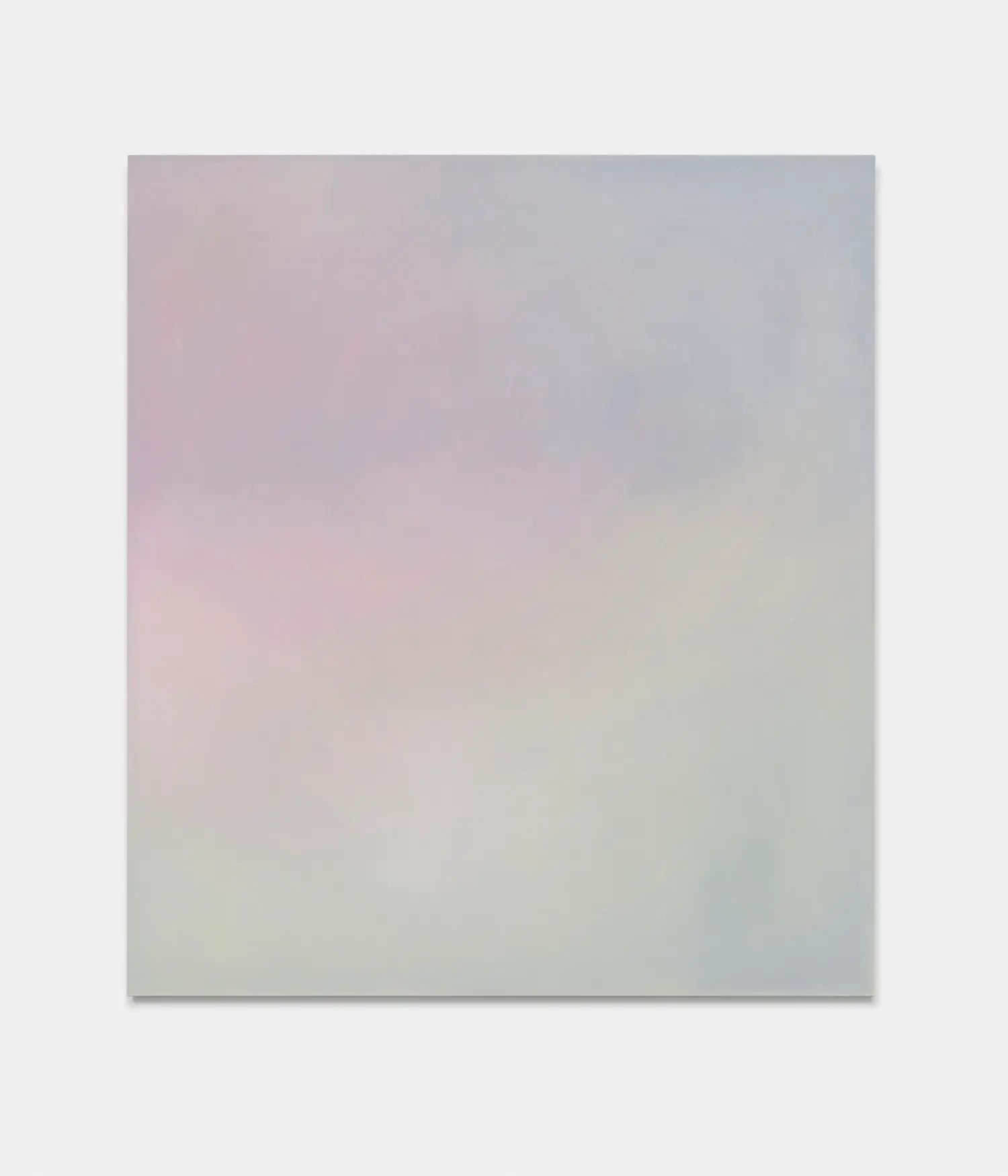
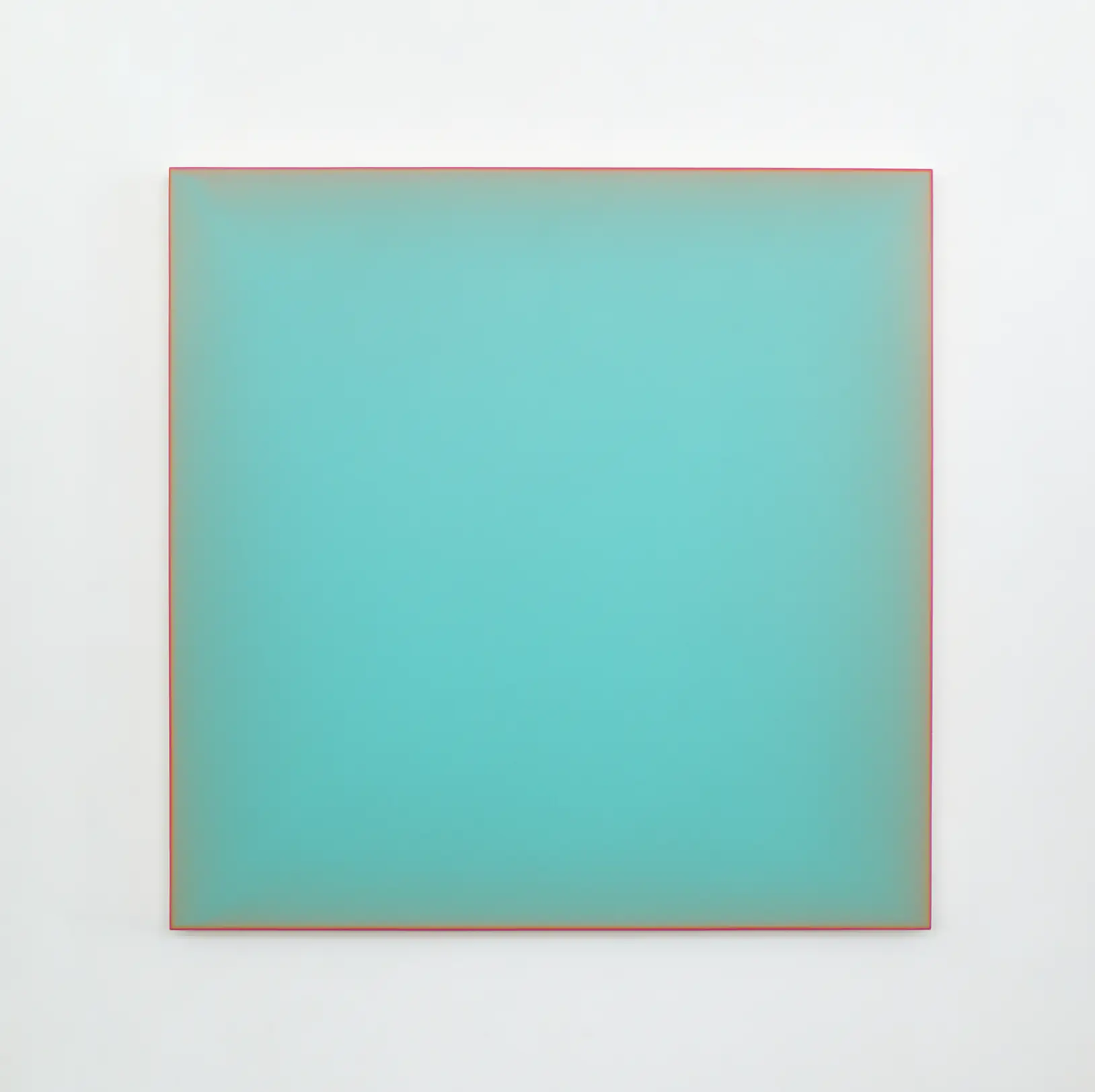
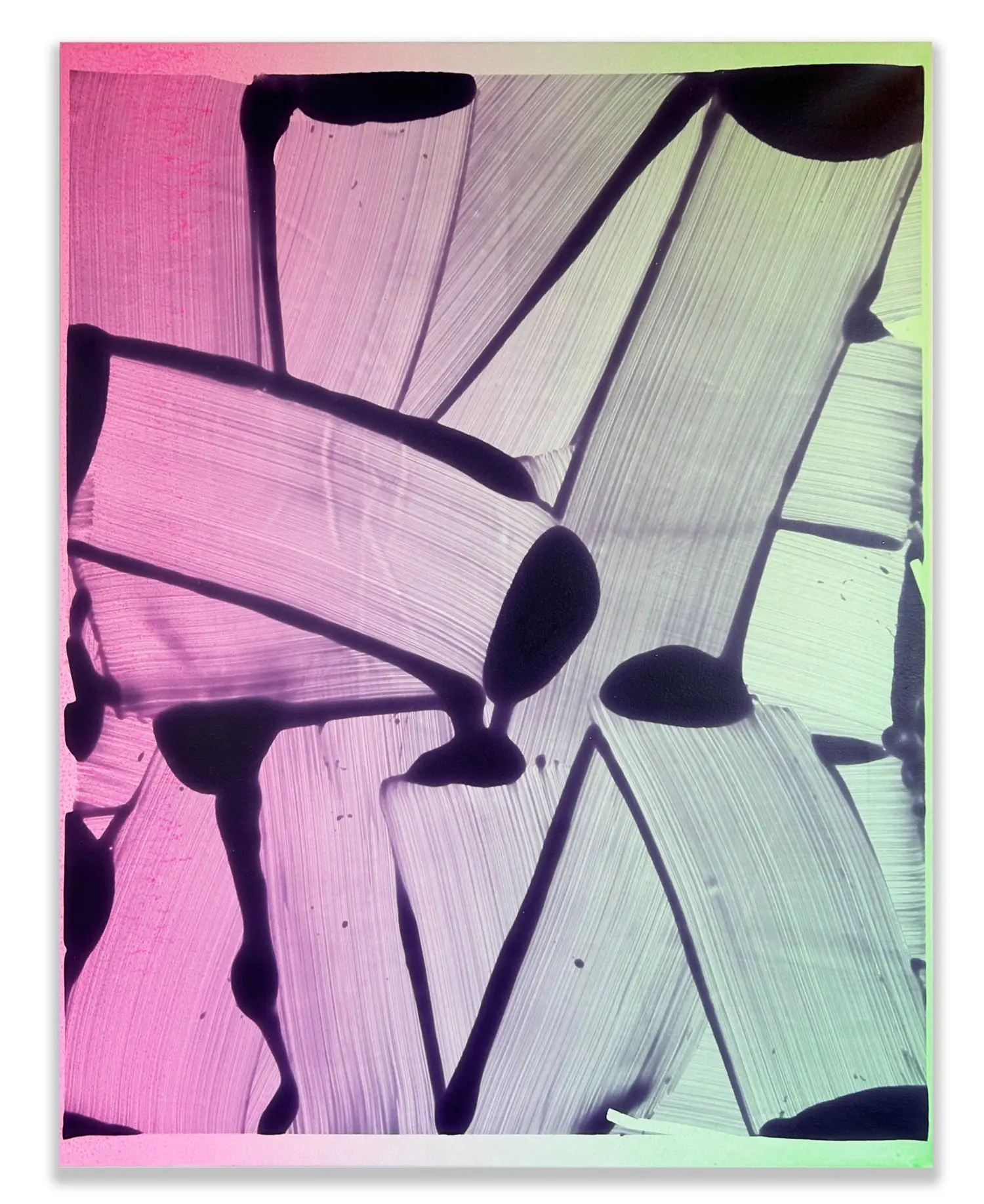
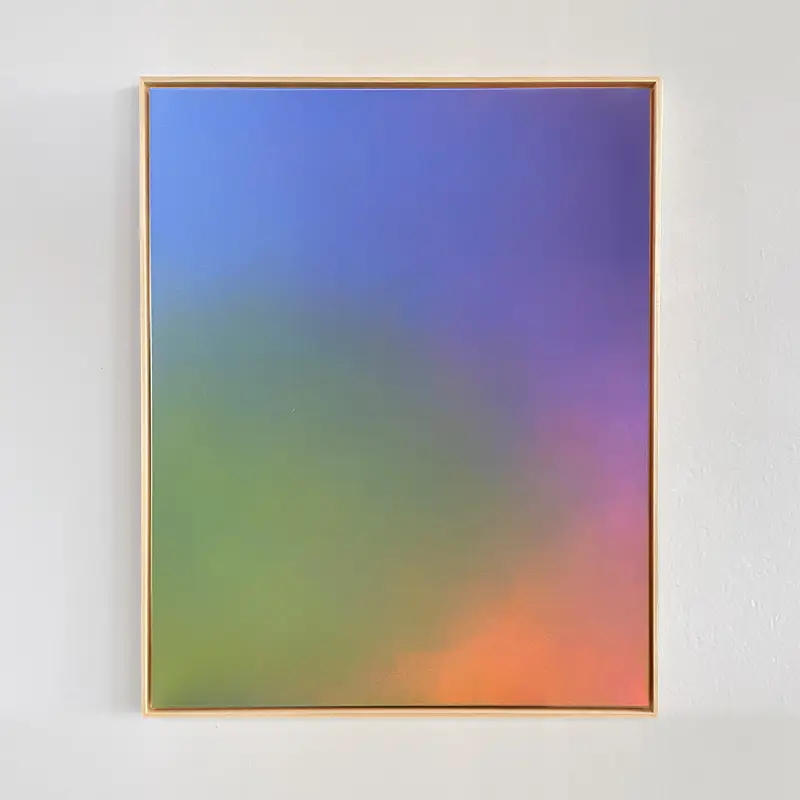
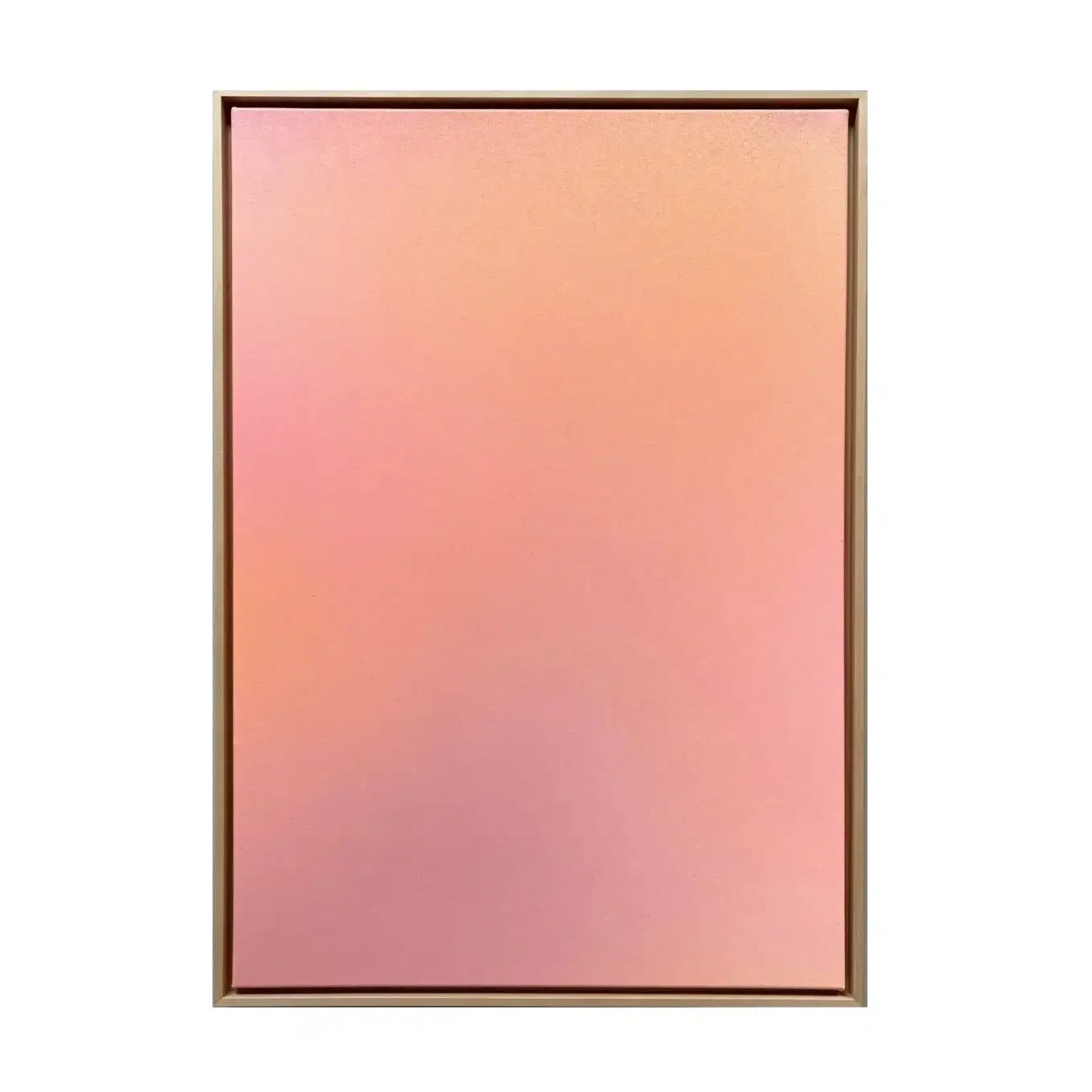
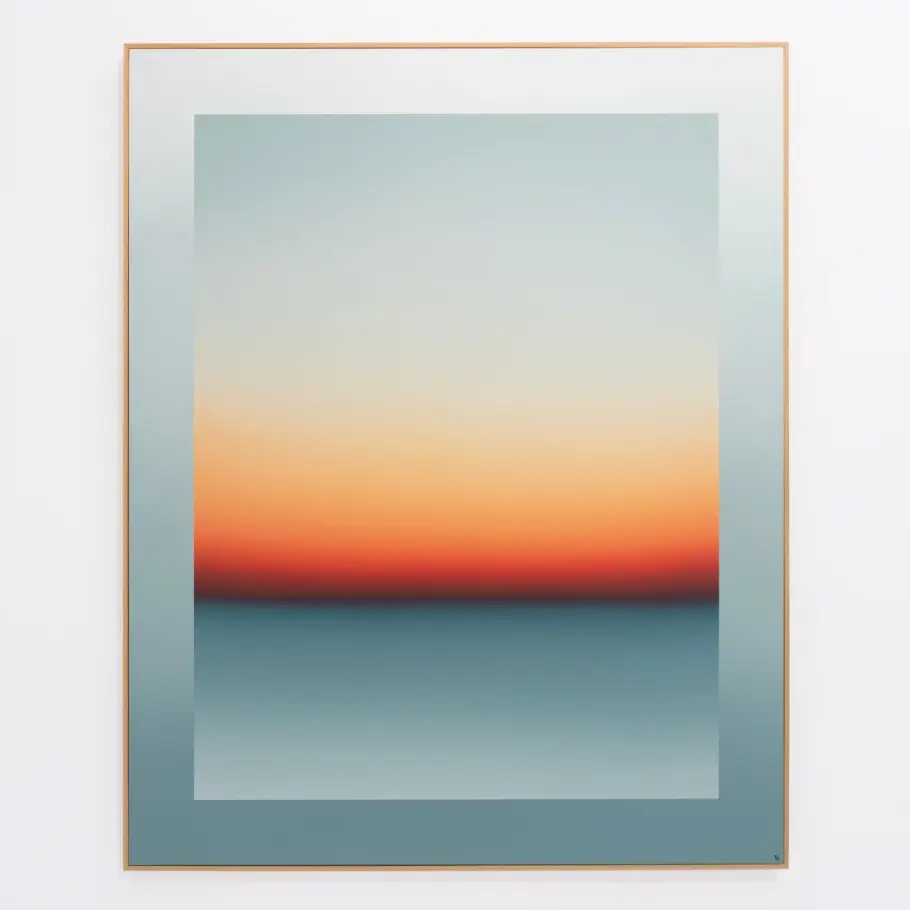
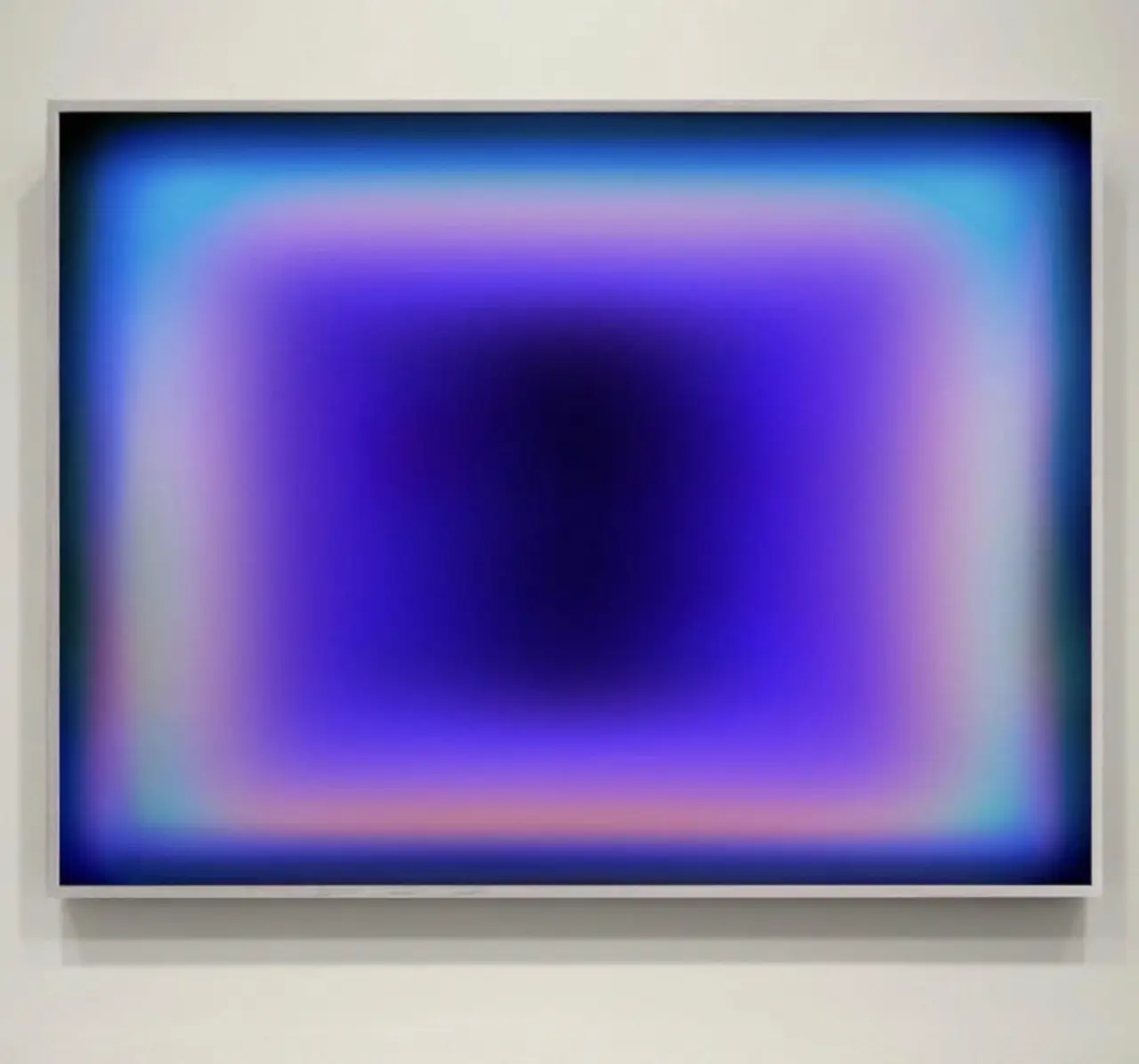
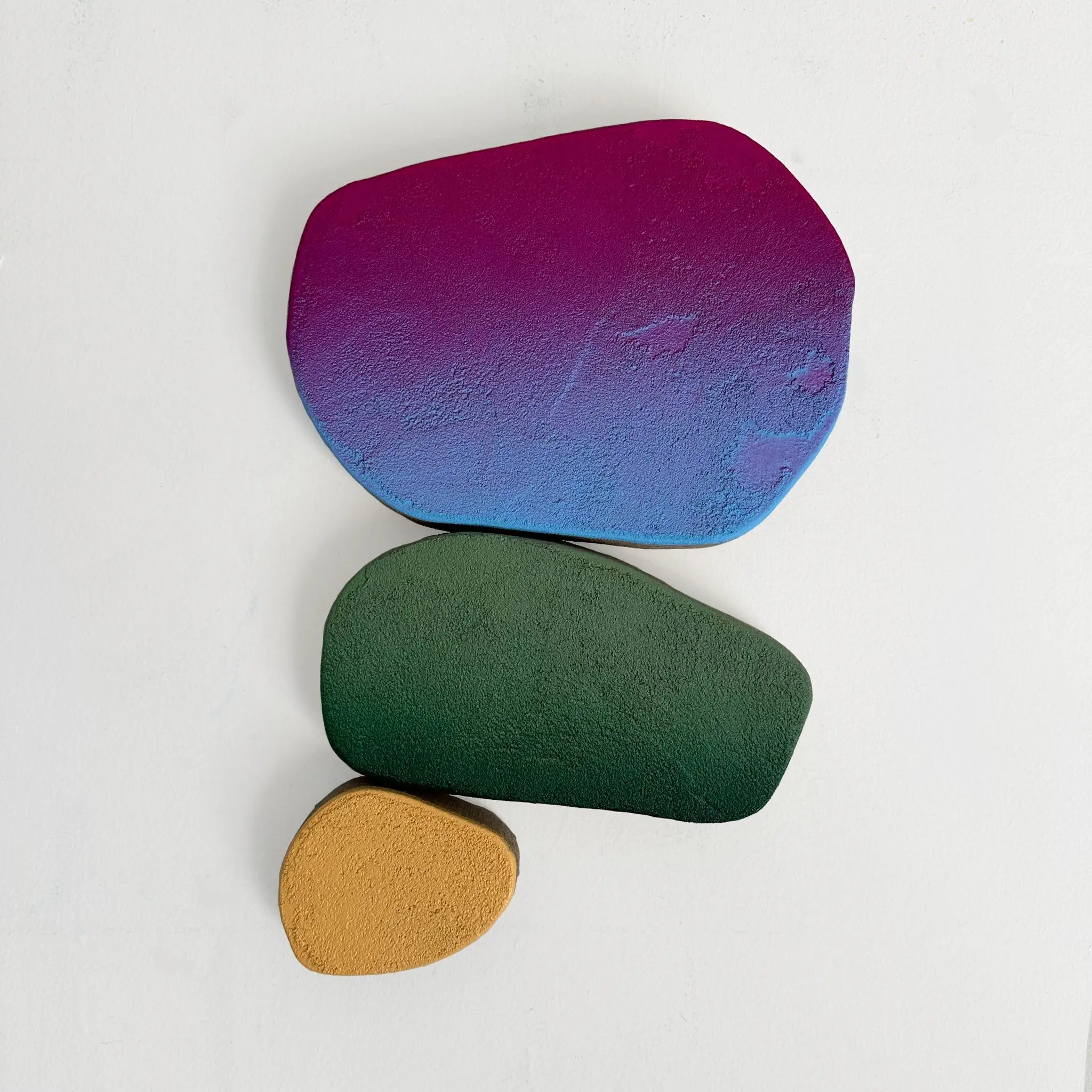
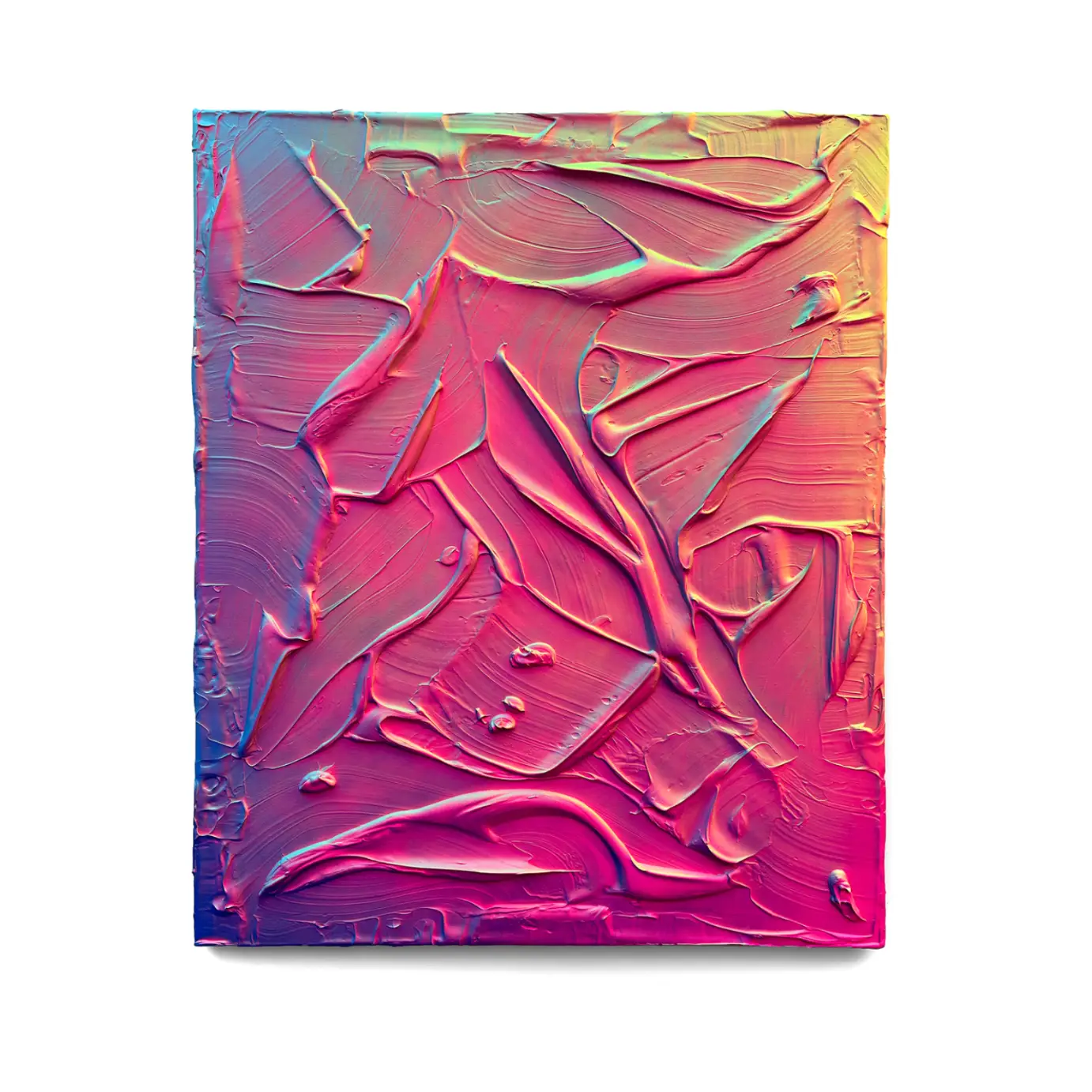
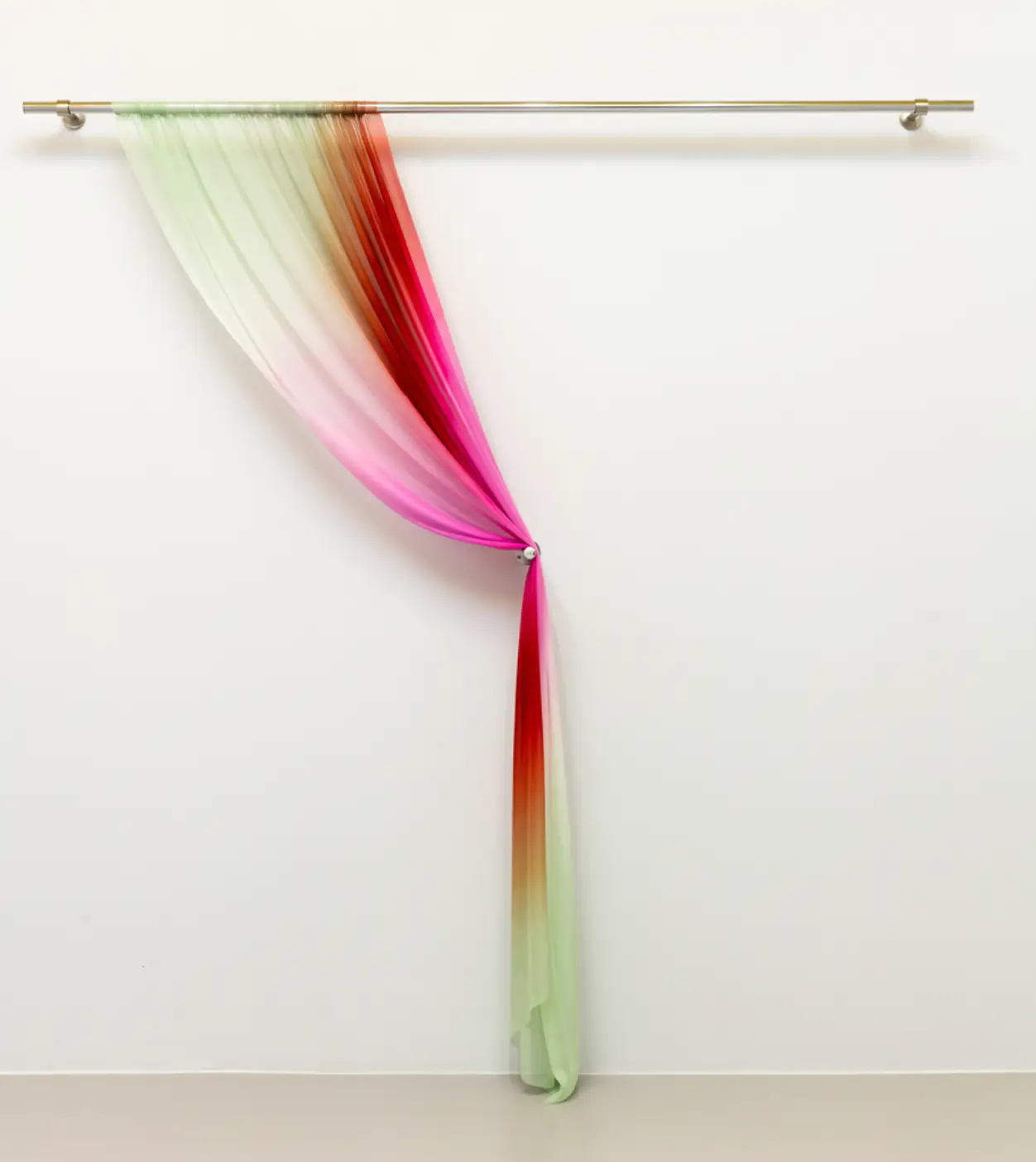
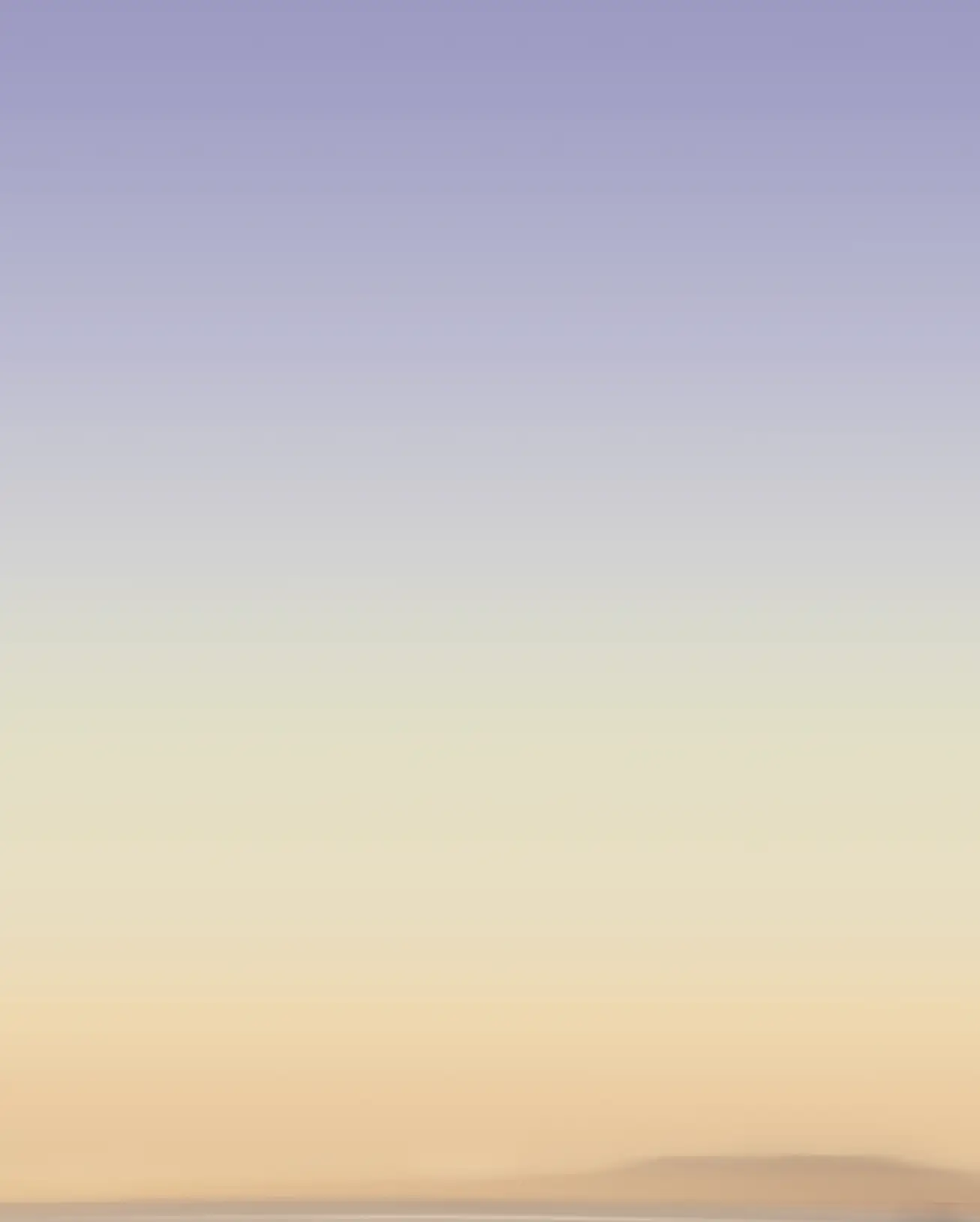
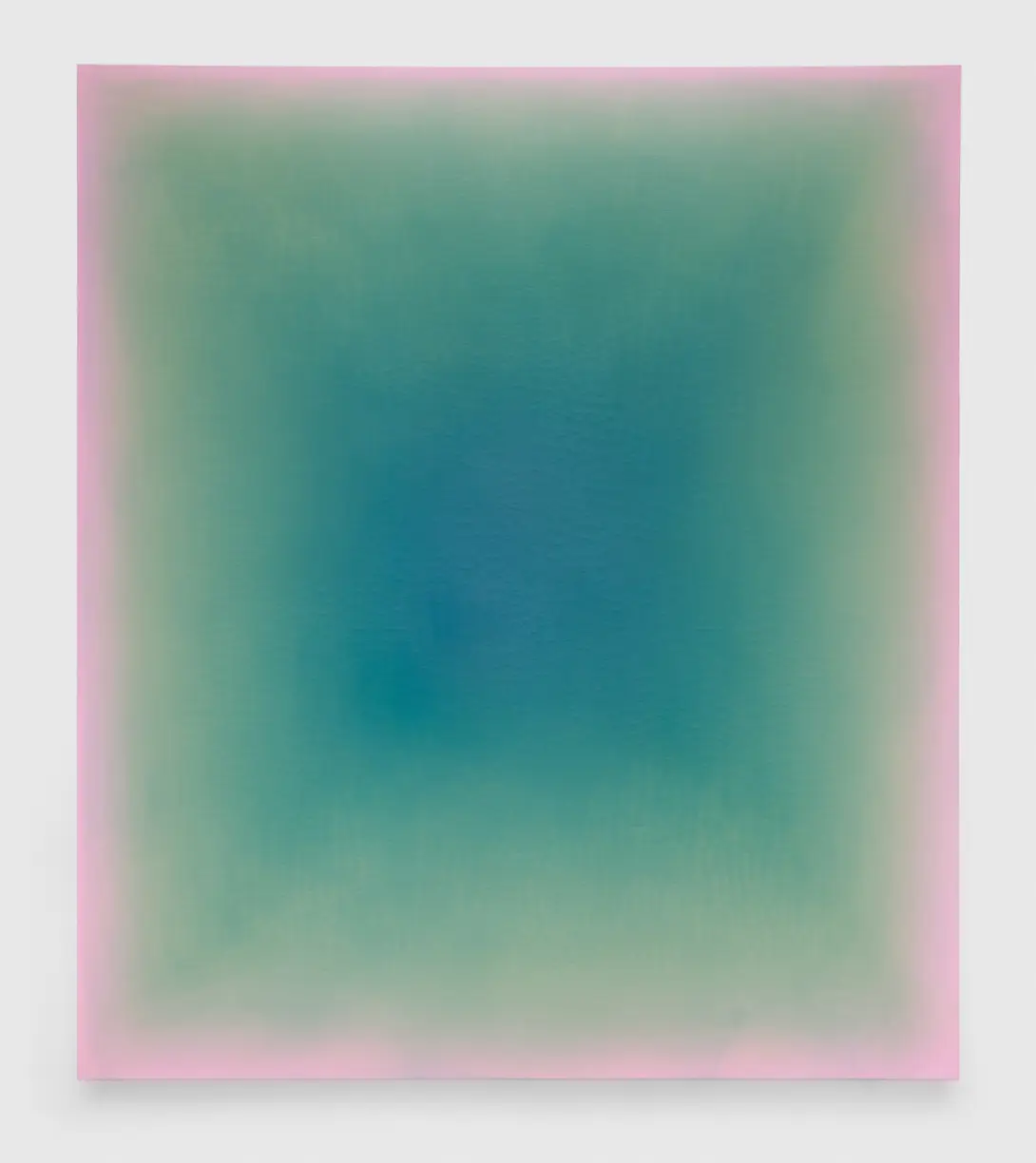
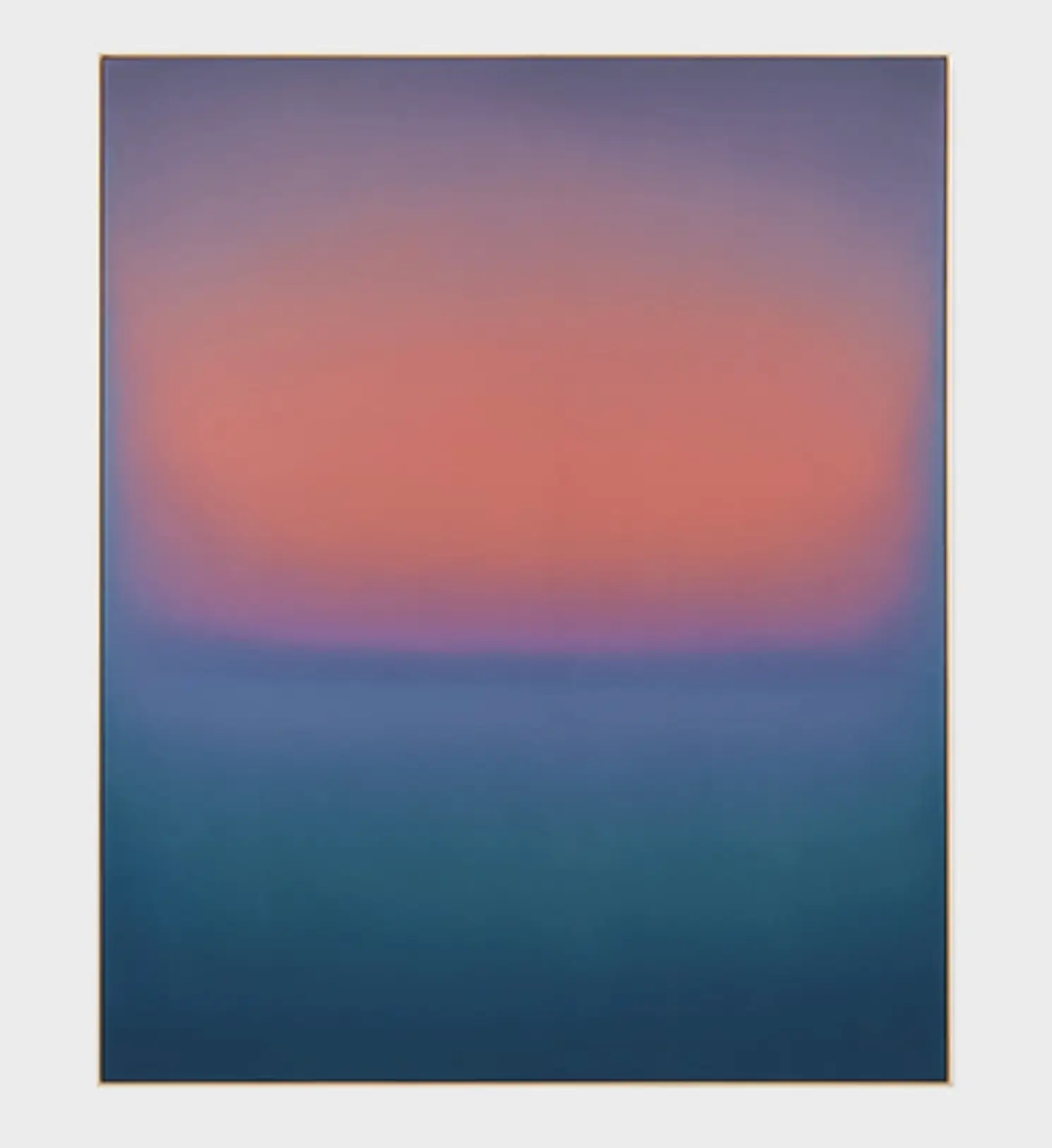
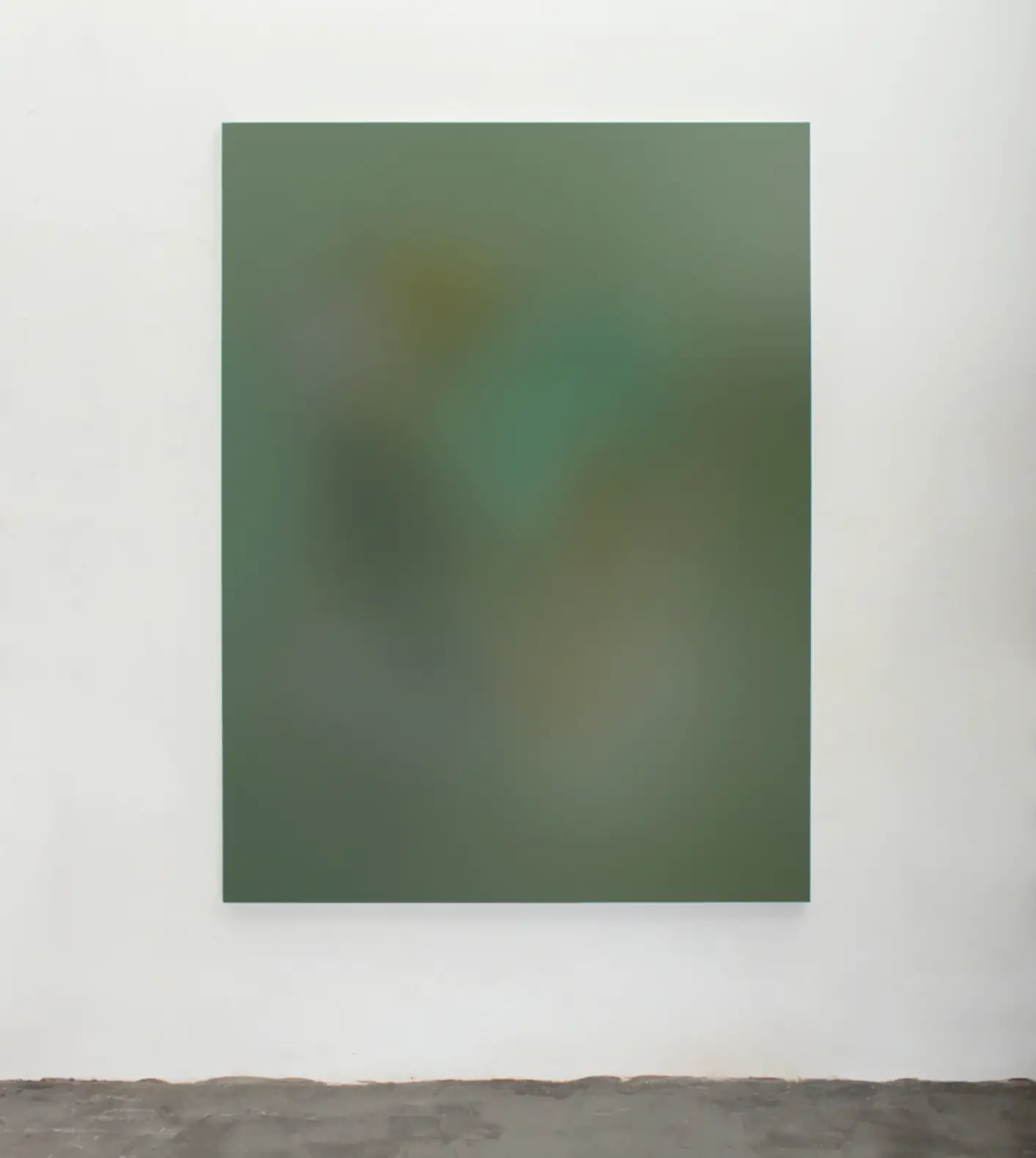
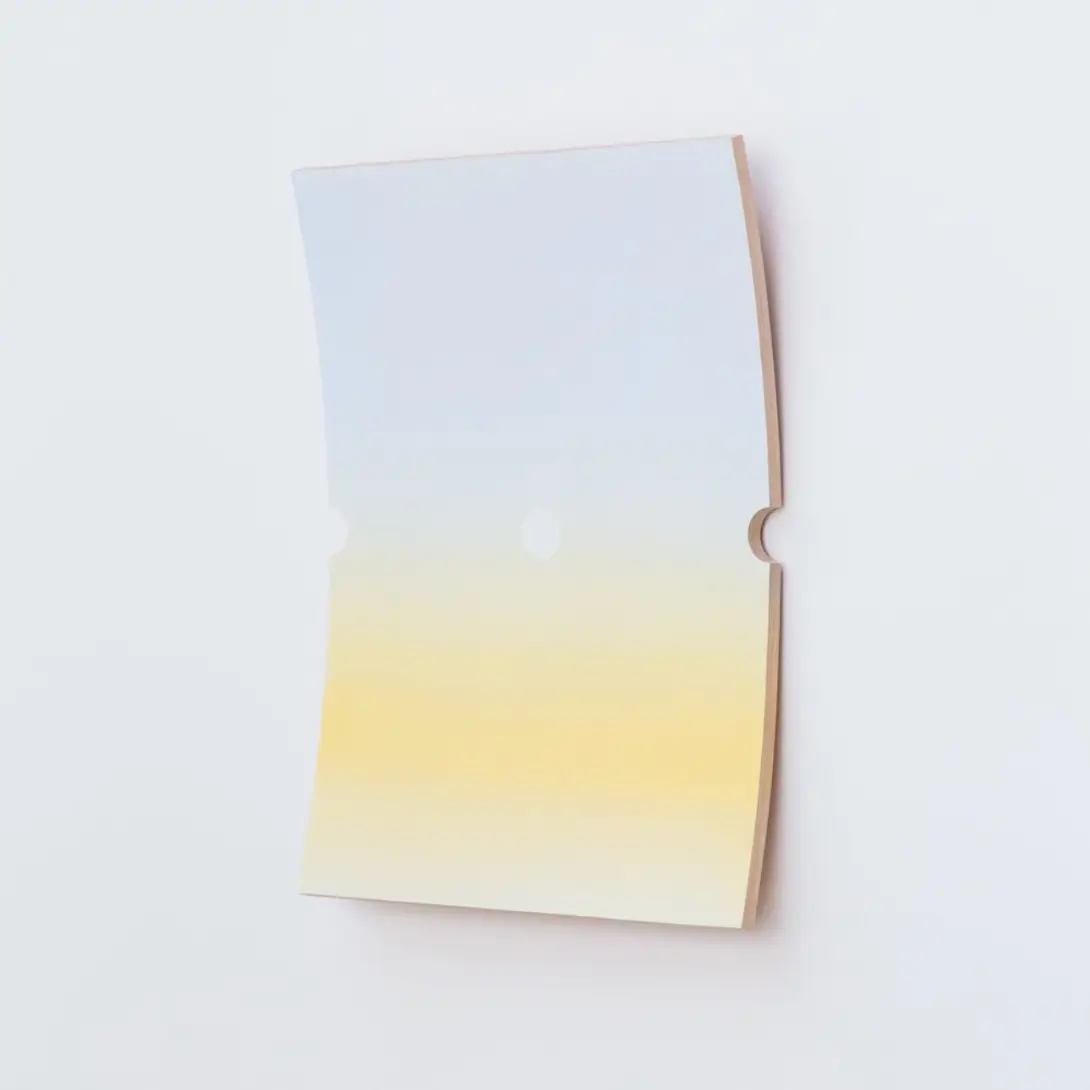
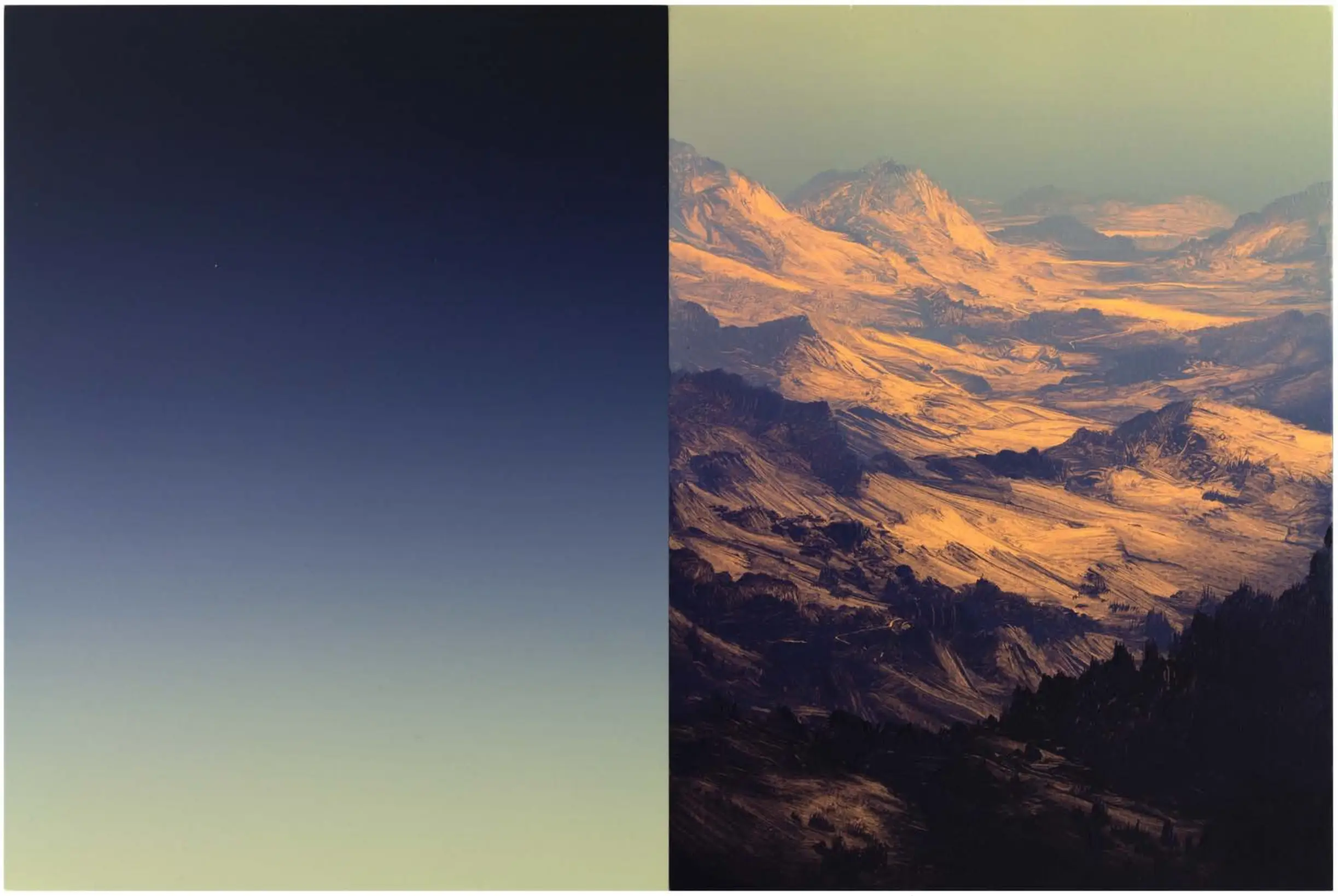
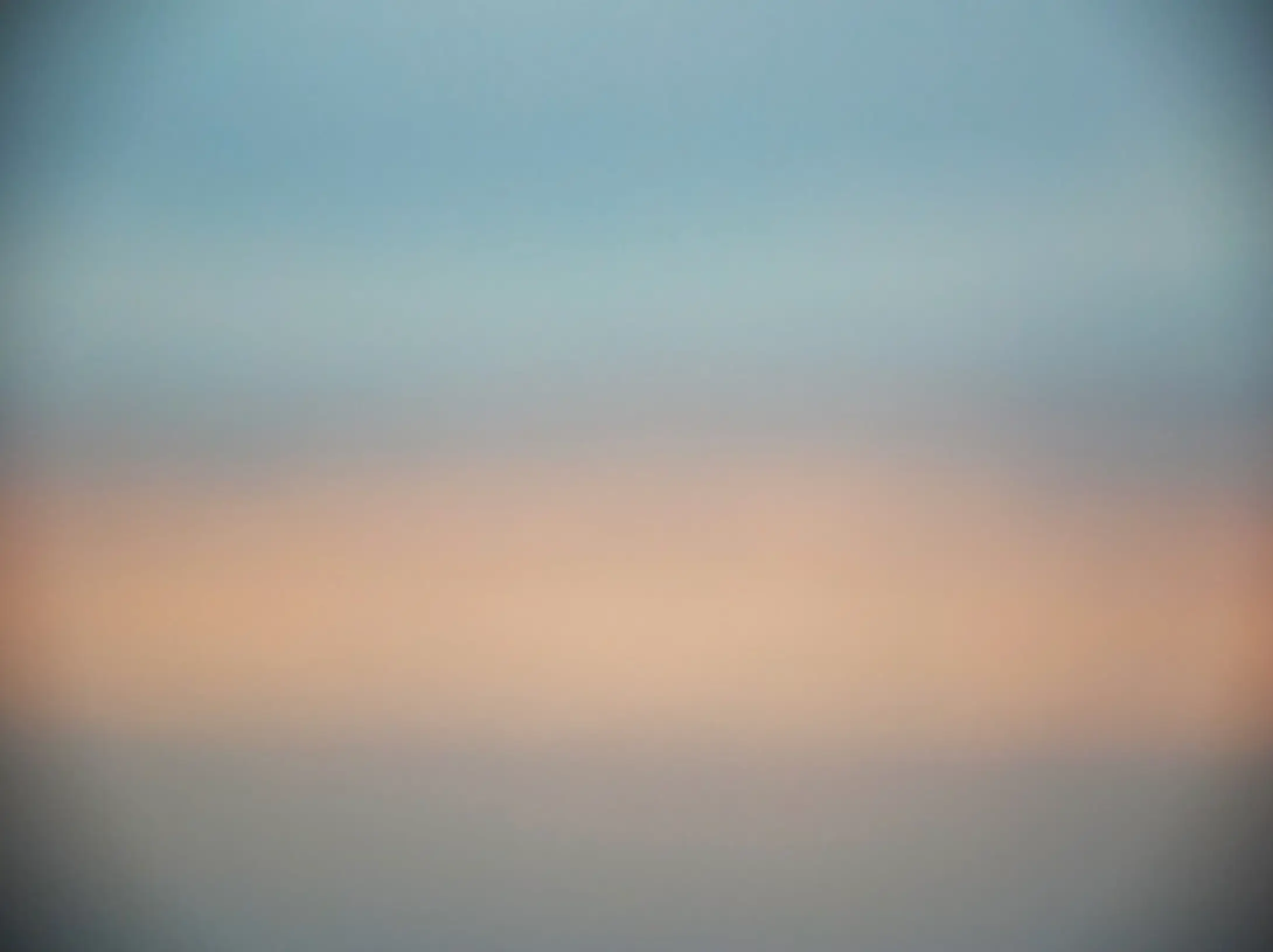
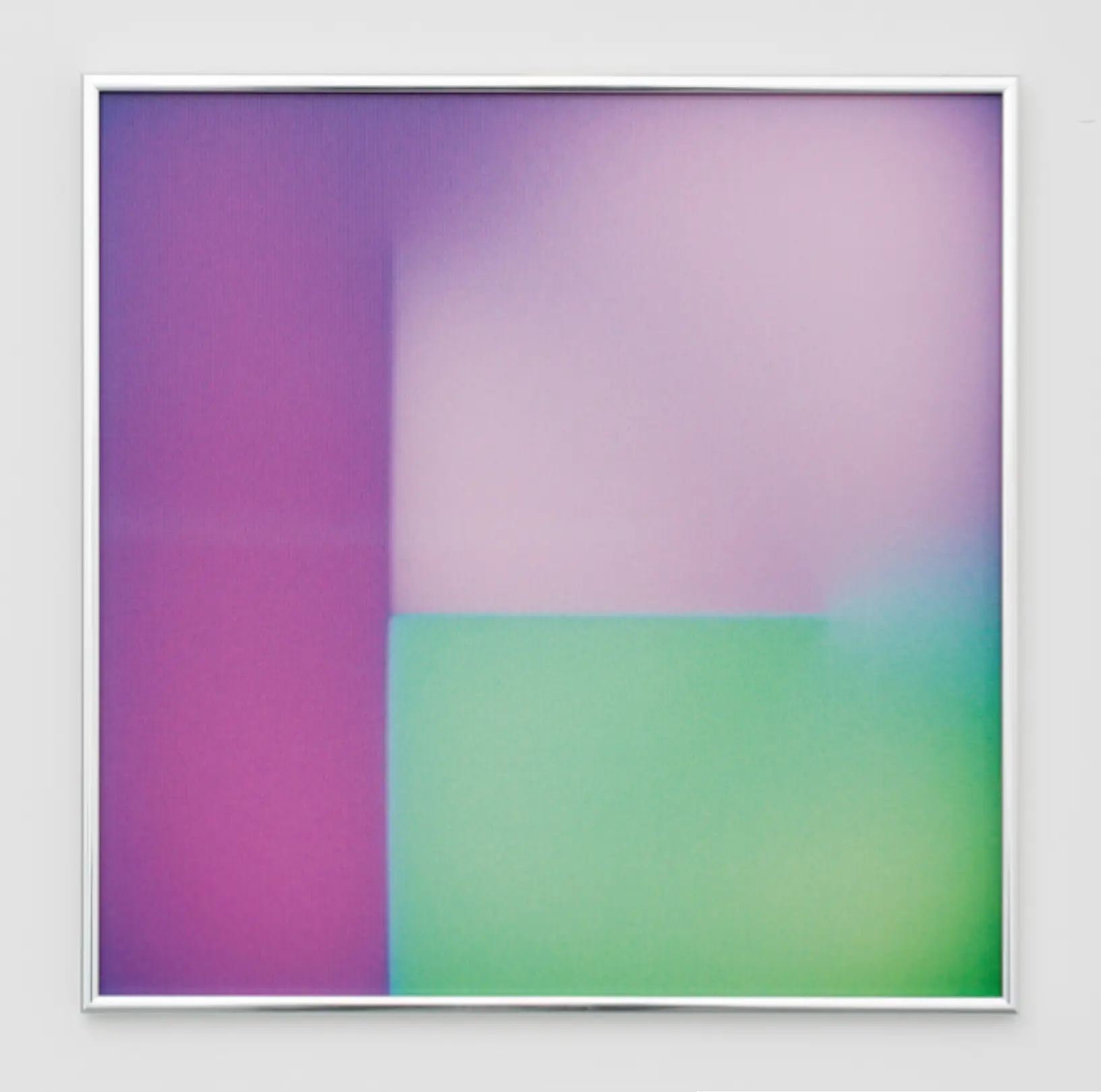
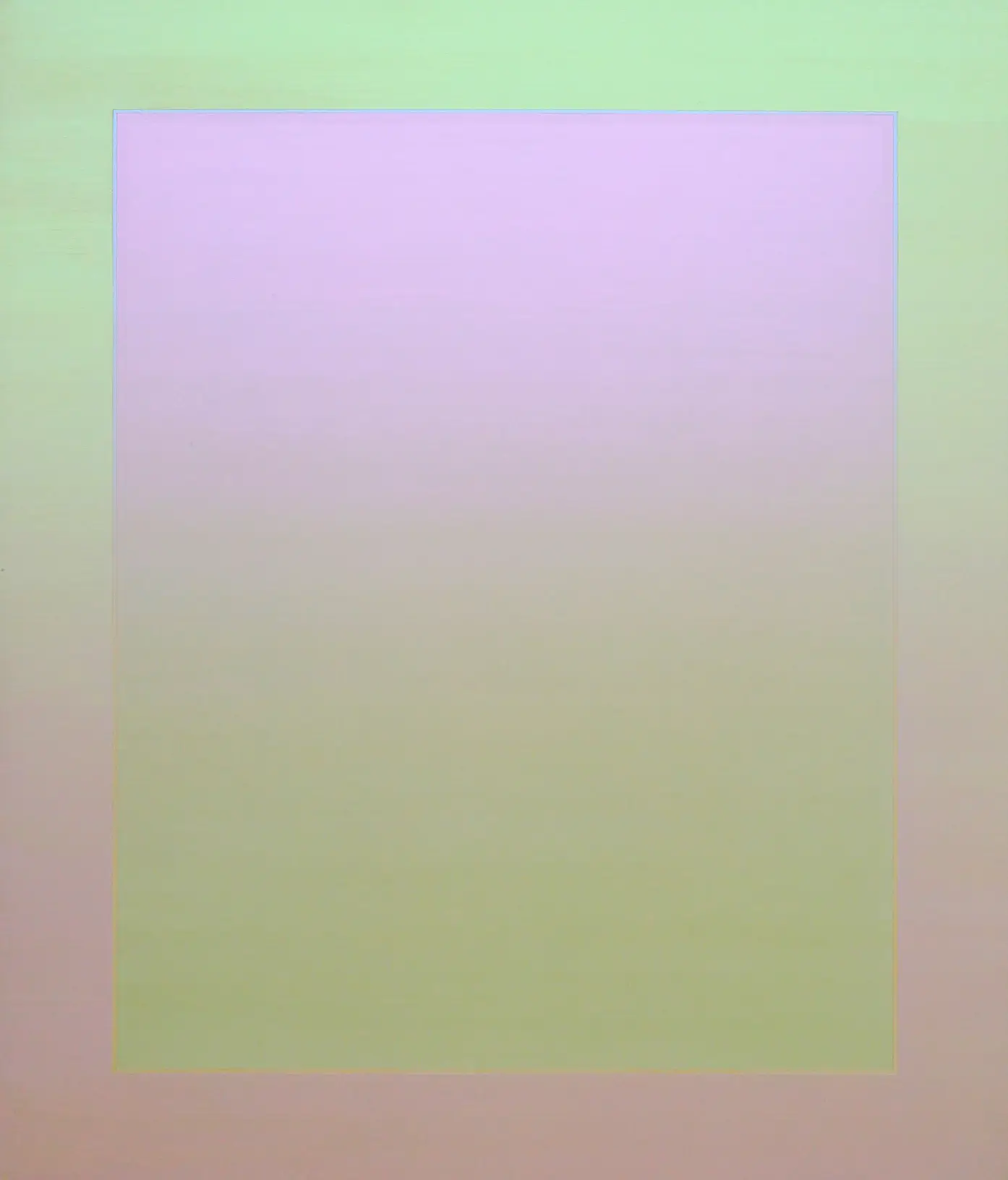

I might not appreciate all these artists as much as the eleven established artists from our reasoned anthology, but there are so many good and intriguing artworks, showing the diversity of the gradient and the myriad of perspectives to approach this visual motif, ranging from painting, to sculpture, to photography, and installation. It is also uncanny to see how strong the legacy and influence is of the pioneering artists with these ultra-contemporary artists. Ruben Benjamin seems to be a—conscious or unconscious—reinterpretation of Jules Olitski’s impasto gradients using more vivid and fresh colors, Jordan Tran/KEAN’s gradients in gradients is a continuation of the work of Jef Verheyen, and Charlie De Voet’s gradients seem to echo the luminous square gradients by Wang Guangle.
However, a clear luring threat here for these artists and for the gradient in general, is when it is used as a mere visual, relying entirely on it’s ASMR effect and the fact that it is currently trending, especially on social media. In that case, the gradient in contemporary art is reduced from a relevant artistic exploration to a trending visual spectacle. This is where my personal appreciation starts to drop, as popularity starts to overshadow originality, form is presented without content, and the decorative has priority over the artistic. Nevertheless, the ongoing history of the color gradient is an exciting one, and only time will tell how long it will remain at the forefront of abstraction as one of the biggest visual trends in contemporary art.
Notes:
- Axel Vervoordt Gallery, Shen Chen at https://www.axel-vervoordt.com/gallery/artists/shen-chen consulted November 6, 2024. ↩︎
- Matthew Liu Fine Arts, Shen Chen at https://www.mlfinearts.com/shen-chen consulted November 6, 2024. ↩︎
- Salon94, Judy Chicago at https://salon94.com/artists/judy-chicago#biography consulted November 7, 2024. ↩︎
- Pace Gallery, Wang Guangle at https://www.pacegallery.com/exhibitions/wang-guangle/ consulted November 6, 2024. ↩︎
- Pace Gallery, Loie Hollowell at https://www.pacegallery.com/artists/loie-hollowell/ consulted November 6, 2024. ↩︎
- Loie Hollowell, CV at http://www.loiehollowell.com/page-cv consulted November 6, 2024. ↩︎
- Guggenheim, Jules Olitski at https://www.guggenheim.org/artwork/artist/jules-olitski consulted November 6, 2024. ↩︎
- Pace, Mika Tajima: Energetics at https://www.pacegallery.com/exhibitions/mika-tajima-energetics/ consulted November 6, 2024. ↩︎
- Mika Tajima, You Must Be Free at https://mikatajima.com/you-must-be-free/ consulted November 6, 2024. ↩︎
- Kayne Griffin, Mika Tajima at https://www.kaynegriffin.com/artists/mika-tajima/bio consulted November 6, 2024. ↩︎
- Gagosian, James Turrell at https://gagosian.com/artists/james-turrell/ consulted November 6, 2024. ↩︎
- Lisson Gallery, Lee Ufan at https://www.lissongallery.com/artists/lee-ufan consulted November 6, 2024. ↩︎
- Axel Vervoordt, Jef Verheyen at https://www.axel-vervoordt.com/gallery/artists/jef-verheyen consulted November 7, 2024. ↩︎
- Perrotin, Pieter Vermeersch at https://www.perrotin.com/artists/Pieter_Vermeersch/142#news consulted November 7, 2024. ↩︎
- Mennour, Ann Veronica Janssens at https://mennour.com/artists/ann-veronica-janssens consulted November 7, 2024. ↩︎
Last Updated on April 15, 2025
About the author:
- Tags: HOME


